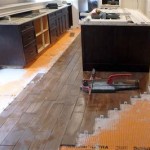Laminate Versus Vinyl Plank Flooring: A Comparative Analysis
Selecting appropriate flooring is a crucial aspect of any home renovation or new construction project. Among the numerous options available, laminate and vinyl plank flooring stand out as popular choices due to their affordability, ease of installation, and aesthetic versatility. While both materials offer similar benefits, they possess distinct characteristics that make them more suitable for certain applications. This article provides a comprehensive comparison of laminate and vinyl plank flooring, examining their key features, advantages, and disadvantages to assist in making an informed decision.
Laminate flooring, in its modern iteration, is a multi-layer synthetic flooring product fused together through a lamination process. It typically consists of a core layer made of high-density fiberboard (HDF) or medium-density fiberboard (MDF), topped by a decorative photographic layer, and protected by a transparent wear layer. This construction gives laminate its realistic appearance, often mimicking hardwood, tile, or stone, while providing a durable surface. The photographic layer is what gives laminate its wide variety of designs, offering consumers a vast array of stylistic options.
Vinyl plank flooring, on the other hand, is a resilient flooring material made primarily from polyvinyl chloride (PVC). It is available in two main types: luxury vinyl plank (LVP) and waterproof vinyl plank (WPC). LVP typically consists of multiple layers, including a PVC core, a printed decorative layer, and a wear layer. WPC, or wood-plastic composite, adds a rigid core layer composed of recycled wood pulp and plasticizers, enhancing its water resistance and stability. Vinyl plank flooring is known for its durability, water resistance, and ease of maintenance.
Cost Considerations
One of the primary factors influencing flooring selection is cost. Both laminate and vinyl plank flooring are generally more affordable than natural hardwood or ceramic tile. However, there are nuances in pricing that warrant careful consideration.
Laminate flooring generally has a lower upfront cost than vinyl plank flooring. The price per square foot for laminate can range from $1 to $5, depending on the thickness, wear layer, and quality of the product. Installation costs can also be relatively lower, as laminate is often designed for easy click-lock installation, making it a viable DIY project for many homeowners. However, the cost of underlayment should be factored into the overall budget, as it is typically required for laminate flooring to provide cushioning, sound insulation, and moisture protection.
Vinyl plank flooring tends to be slightly more expensive than laminate, with prices ranging from $2 to $7 per square foot. The cost can vary depending on the thickness of the wear layer, the quality of the core material (LVP vs. WPC), and any added features, such as enhanced texture or beveled edges. While vinyl plank flooring can also be installed using a click-lock system, professional installation is often recommended to ensure proper sealing and prevent water damage, particularly in moisture-prone areas. The need for specialized adhesives or underlayment can also impact the overall installation cost.
When comparing costs, it is essential to consider the long-term value and durability of each material. While laminate may have a lower initial cost, vinyl plank flooring's superior water resistance and longevity can make it a more cost-effective choice in the long run, especially in areas susceptible to spills, humidity, or heavy foot traffic.
Durability and Water Resistance
Durability and water resistance are critical factors to consider when choosing flooring, especially in high-traffic areas and rooms prone to moisture. The performance of laminate and vinyl plank flooring varies significantly in these aspects.
Laminate flooring is known for its scratch resistance and ability to withstand daily wear and tear. The protective wear layer, typically made of aluminum oxide, helps to shield the photographic layer from scratches, stains, and fading. However, laminate is susceptible to water damage. While some laminate products are marketed as water-resistant, they are generally not waterproof. Prolonged exposure to moisture can cause the core layer to swell, warp, and delaminate, leading to costly repairs or replacement. This makes laminate flooring less suitable for bathrooms, kitchens, and basements, where moisture levels are typically higher.
Vinyl plank flooring, particularly waterproof vinyl plank (WPC), excels in water resistance. The PVC construction makes it completely impervious to water, preventing swelling, warping, and mold growth. This makes vinyl plank flooring an ideal choice for bathrooms, kitchens, laundry rooms, and basements. The wear layer on vinyl plank flooring also provides excellent protection against scratches, stains, and dents. Moreover, vinyl plank flooring is generally easier to clean and maintain than laminate, requiring only regular sweeping and mopping.
The ability of vinyl plank flooring to resist water damage gives it a significant advantage over laminate in terms of durability and longevity. In areas where moisture is a concern, vinyl plank flooring is the clear winner.
Installation and Maintenance
Ease of installation and maintenance are important considerations for homeowners who prefer DIY projects or want to minimize ongoing upkeep. Both laminate and vinyl plank flooring offer relatively straightforward installation methods and require minimal maintenance.
Laminate flooring is typically installed using a click-lock system, where the planks interlock with each other without the need for glue or nails. This makes it a relatively easy DIY project for homeowners with basic carpentry skills. However, it is crucial to ensure that the subfloor is level and smooth before installation, as any imperfections can affect the appearance and stability of the flooring. An underlayment is also required to provide cushioning, sound insulation, and moisture protection. Cutting laminate planks can be done using a saw or a scoring tool, but care must be taken to avoid chipping or splintering.
Vinyl plank flooring also often uses a click-lock system for installation, similar to laminate. However, some vinyl plank products may require glue-down installation, particularly in commercial settings or areas with heavy foot traffic. Like laminate, it is important to ensure that the subfloor is level and clean before installation. While vinyl plank is more flexible than laminate, allowing it to conform to minor subfloor imperfections, significant irregularities should be addressed to prevent uneven wear and tear. Cutting vinyl plank is generally easier than cutting laminate, often requiring only a utility knife and a straight edge.
In terms of maintenance, both laminate and vinyl plank flooring are relatively easy to clean and maintain. Regular sweeping or vacuuming is sufficient to remove dirt and debris. For deeper cleaning, a damp mop and a mild detergent can be used. However, it is important to avoid using excessive water on laminate flooring to prevent moisture damage. Vinyl plank flooring is more forgiving in this regard and can withstand more frequent and thorough cleaning.
Aesthetic Appeal and Comfort
The aesthetic appeal of flooring plays a significant role in the overall look and feel of a home. Both laminate and vinyl plank flooring offer a wide range of styles, colors, and patterns to suit various design preferences. Comfort underfoot is also an important consideration, particularly in areas where people spend a lot of time standing or walking.
Laminate flooring offers a convincing imitation of natural wood, tile, or stone. Advances in printing technology have enabled manufacturers to create realistic textures and patterns that closely resemble the appearance of natural materials. Laminate flooring is available in a wide variety of colors, styles, and plank sizes, allowing homeowners to achieve a desired aesthetic at a fraction of the cost of natural materials. However, some may argue that laminate often lacks the inherent warmth and character of real wood.
Vinyl plank flooring also provides a realistic imitation of natural materials, with high-definition printing technology creating convincing wood grain patterns and textures. Vinyl plank flooring is available in a wide range of colors, styles, and thicknesses, allowing homeowners to customize their flooring to match their décor. Some vinyl plank products even feature embossed surfaces to further enhance the realistic appearance. In terms of comfort, vinyl plank flooring tends to be softer and more flexible than laminate, providing a more comfortable surface to walk on. The added thickness of WPC vinyl plank flooring can also provide additional cushioning and sound insulation.
While both materials offer aesthetic versatility, the choice between laminate and vinyl plank flooring often comes down to personal preference. Some homeowners may prefer the look and feel of laminate, while others may appreciate the added comfort and durability of vinyl plank flooring.

Vinyl Plank Vs Laminate Flooring Which Is Right For You Onflooring

Luxury Vinyl Plank Vs Laminate What S The Difference

Laminate Flooring Vs Vinyl Plank

Hardwood Floors Vs Laminate Luxury Vinyl Plank Lvp Which Should I Use And What Are Buyers Wanting

What S The Difference Between Vinyl And Laminate Flooring Igloo Surfaces

Laminate Vs Vinyl The Home Depot

Laminate Vs Hardwood Vinyl Flooring 50floor

Laminate Vs Vinyl Flooring Costs Pros Cons Differences 2025

Laminate Vs Lvp Choose The Ideal Floor Today Reallyfloors America S Est Hardwood Flooring

Vinyl Vs Laminate Flooring Refloor
Related Posts








